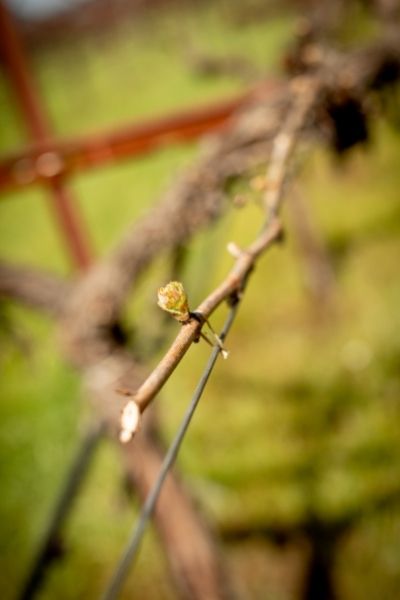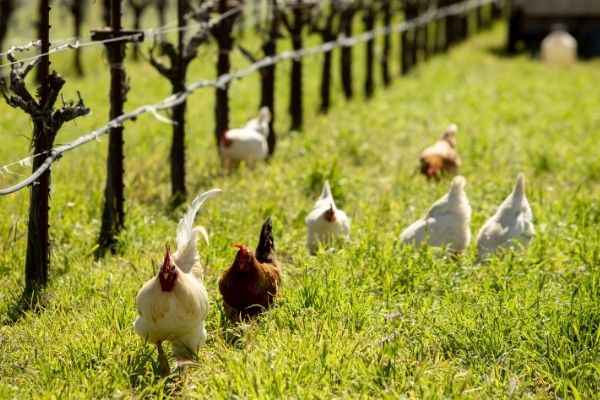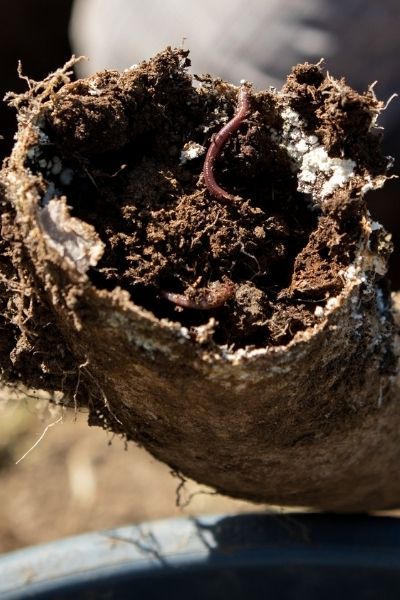Budbreak at Eco Terreno: 2022 Review
If you’ve ever planted something and waited with anticipation for it to grow, you know how we’re feeling at Eco Terreno right now. Each spring, after our vines rest leafless and in dormancy for the winter, our vines come to life practically overnight with new growth. This is the beginning of the annual vine cycle and it’s an exciting, important prelude to what we can expect from our grapes and wine from the 2022 vintage.
For example, for 2022, we’re seeing growth begin earlier than last year. This means this year’s flowering period and harvest are likely to occur earlier than last year.
What we learn each year from budbreak
The rate at which our vines awaken is also telling. An uneven budbreak—or various vines awakening at different times over a longer period—can indicate a longer, more staggered harvest period. This means we’ll wait longer for some vineyard blocks to ripen than others and have to move quickly and with agility to harvest the grapes at their optimal ripeness.
Meanwhile, if we see a poor or less robust budbreak, we can potentially expect fewer grape clusters. By harvest, this will translate to less fruit, but more concentrated fruit flavor, which will produce a higher-quality wine, but also less of it.

How does the climate affect budbreak?
Also, the delicacy of the buds during this period are greatly impacted by weather. Wind or hail can damage the supple green tissue of our vines. If frost hits after the buds have emerged, we may need to depend on secondary buds, which, even if successful, will lessen our yield by 25 to 50 percent and result in less flavorful fruit.
Each year, we work in partnership with nature’s best practices to promote healthy budbreak. In the fall, after harvest, we hope for plenty of rain, but if we don’t get it, we deeply water the soil so our vines can gently go to sleep and wake up well rested. For them, it’s like a glass of warm milk and kiss on the forehead at bedtime.
During winter, we fortify the soil monthly with our proprietary, Biodynamic® “vermicompost tea” soil spray, plus two types of compost. This mother’s milk for our vines will help them to awaken energized and ready for a healthy growing season.
This spring, as we enter another extreme drought year, we used our sprinklers to simulate spring rain. We also protect against possible late frosts through various methods, such as overhead irrigation and wind machines that move cold air before it settles between the vines.
All the signs point to a great season ahead!
Budbreak is an exciting time, but it’s also anxiety-inducing because what happens now has great impact on what ends up in the bottle. This year, like most years in our vineyard, our white varieties hit 50 percent budbreak by mid-March and our red varieties followed in mid-April. This is a good sign. But it’s only the beginning. However, with good rest and optimal soil health, our vineyards are emerging with great promise of another excellent vintage of Eco Terreno wines. We’ll keep you posted!

Join The Buzz – our mailing list with seasonal news from the vineyard and tips from our experts on living a more eco-friendly life.
What is vermicompost?
Vermicomposting is also known as worm composting (“vermis” is Latin for worm). Vermicompost is a rich compost created by worm castings, or in more descriptive words… worm poop. Being considered one of the best composts for plant health, we apply it to our vineyard and gardens frequently and recommend you do too. It’s also relatively easy and cheap to make yourself, without the need for any technical equipment. These are the items you need for a simple worm compost bin.
- Two plastic bins to house the worms—one tall with a lid and one shorter one that the taller bin can rest in. Drill holes in the lid of the taller bin to allow air for the worms.
- Screening material—you don’t want your worms to escape, so use a fine screen to cover the holes in the lid.
- Shredded paper—this is worm housing material. Get enough to fill your taller bin 3 inches deep.
- Lightly wet soil—also for worm habitat. You’ll need a pound of soil to start. Your worms will soon create more for you.
- Worms—we recommend Red Wrigglers. They are the world’s most common compost worm because they create waste quickly, should be easy enough to locate online or locally, and multiply fast so you won’t need to keep buying them after your first batch.
Follow the steps provided by the EPA and create your own nutrient rich worm compost.

What food do worms like and…not like?
We recommend only feeding your worms with raw plant materials, including fruit, vegetables, grains, and beans. Don’t feed them citrus material (orange, lemon and lime peel, juice, pulp, pineapple) or too many tomato-based products, as these have a high acidity content, leading to an environment not well liked by worms. Also complex and cooked matter like meats, oils, and dairy require longer to break down, likely to become rancid and can attract pests to your bin.
